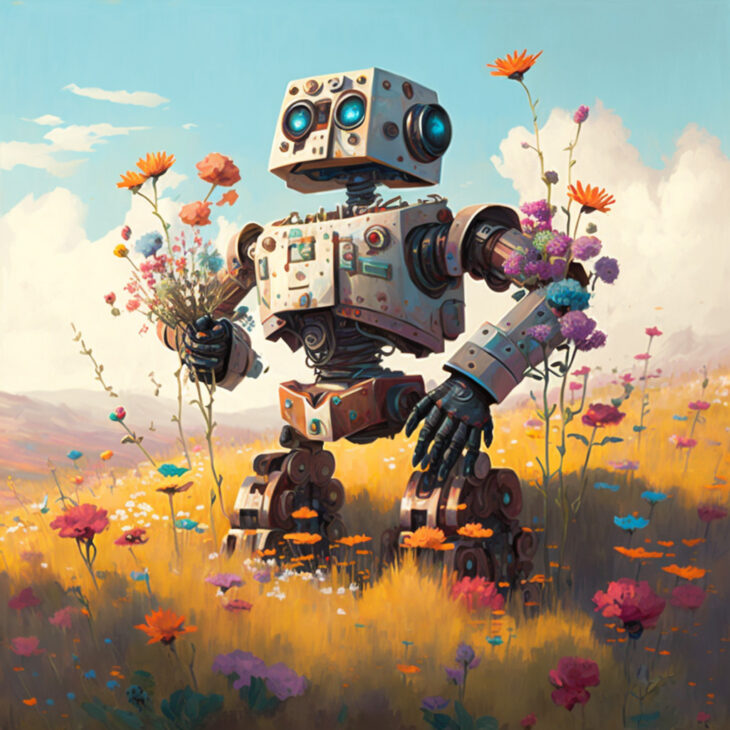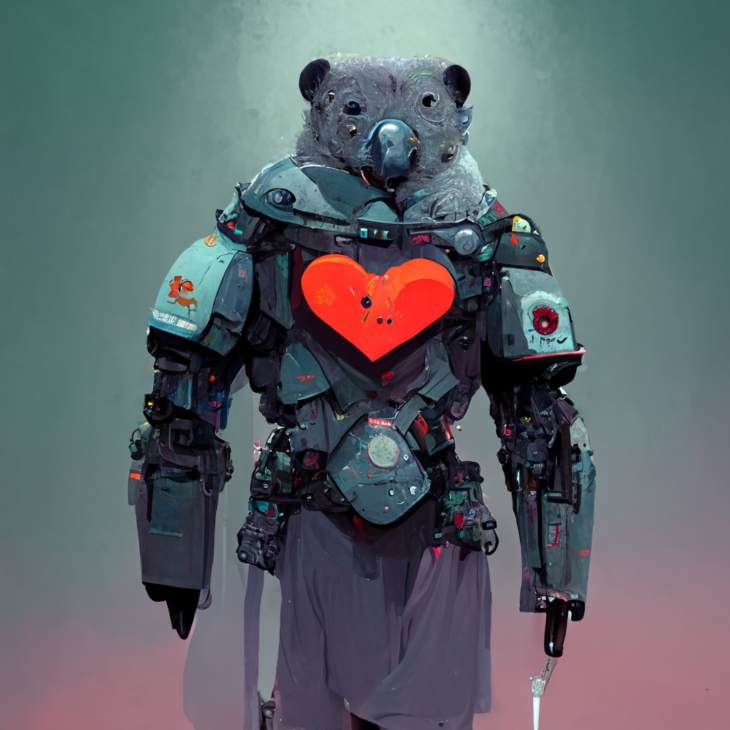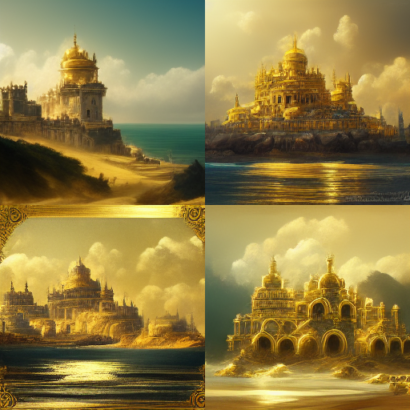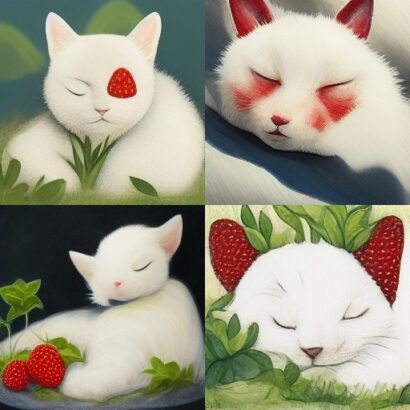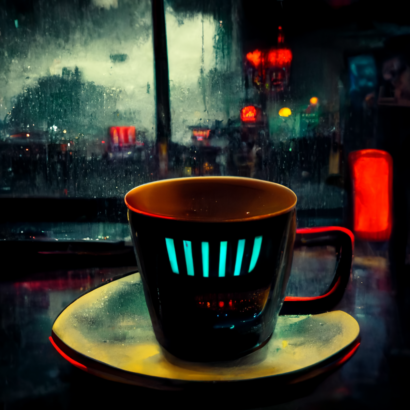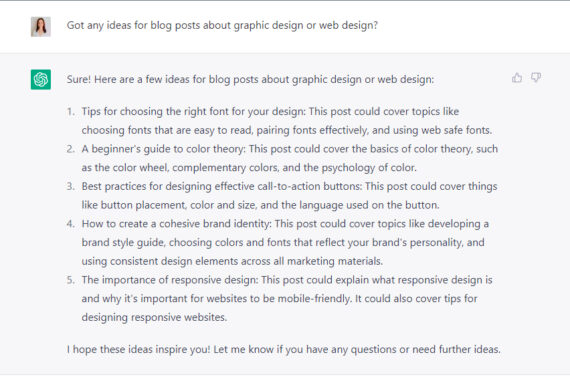Got any ideas for blog posts about graphic design or web design?, I ask.
Sure! ChatGPT replies. Here are a few ideas for blog posts about graphic design or web design …
—
2022 saw an explosion of AI (Artificial Intelligence) in business and entertainment. With it came a host of ethical questions around copyright, the morals of using a free bot when a real human would be losing work, and the role of AI in fake news and misinformation.
To put it simply, it’s been a wild ride so far.
As a freelance graphic and web designer, I’m constantly coming across new things that could “steal my job”. Canva, for example – fantastic (and Australian-invented!) online graphic design software, was one of the first times I was told I wouldn’t be needed anymore. I logged on to Canva for the first time with no small amount of trepidation, but what I saw was a complement to a designer’s work, rather than a competition. Why pay a designer $200 for a simple social media tile when you can make one yourself in Canva? It makes good sense for business owners to leverage software like this to create their more frequent, run-of-the-mill graphics in-house. And when you need an ad for the side of a bus, a totally new brand, or a glossy annual report? Call in a designer.
Canva itself isn’t AI, but it now boasts some AI power-ups. Magic Write can help create a document in Canva Docs, and Text to Image does what it says on the tin – describe an image in text, and watch it come to life.
These are inbuilt examples of the two main AI categories currently causing a stir in the creative world. Midjourney AI, a Discord-based AI, can create incredible graphics in any style just from a text prompt. It’s been joined in theme by apps like Lensa, which uses ten selfies of you to create endless (some gorgeous, some bizarre) AI portraits. And Jasper.ai (alongside ChatGPT, Copy.ai and others) can write your entire blog post – or book! – for you. ChatGPT can even write code.
Down the graphics rabbit hole with Midjourney
Midjourney AI took the creative world by storm upon its release. Authors have created entire graphic novels with it. Musicians are using it for cover art. And it’s easy to see why. One scroll through their Community Showcase and you’ll see what Midjourney does best is dreamy, highly detailed, fantasy graphics.
There’s a bit of a learning curve – I first had to set up a Discord account, then learn how to use Discord!, then learn the prompts and commands to create the graphics.
I started with the first thing that came to mind: I wanted to see a steampunk/cyborg warrior with a cyborg koala. Midjourney combined the two:
My prompt was “a cyborg warrior with a cyborg koala companion”, so it’s interesting that I ended up with a group of koalas in human bodies (or human-shaped robots?). Despite the concept mismatch, the art styles were varied and interesting and I love the way the second “cyborg koala” turned out.
I continued messing around and got some further interesting results:
Could I use these? Not really. Are they great for inspiration? Absolutely. Most of the images had “AI artefacts” – humans with six fingers, random bits of building in the sky, the horror-movie limbs of my ballerina!, etc. They’re all stunningly beautiful to look at, but only a few could be convincingly passed off as “real art”.
I think user error/inexperience plays a role here. I’ve definitely seen some incredible art on Midjourney – photo-real, and impossible to tell it’s from AI – so I assume the more time you can spend in nailing the prompts, the better your resulting art will be.
It appears that with a commercial membership of Midjourney, you can create commercially usable art. However, as Midjourney is trained on an enormous database of existing art by humans, there are currently strong discussions taking place on copyright. It could be argued that all artists learn from one another and reference one another’s work in the same way Midjourney does – but it can also be argued that an AI can’t create, only steal and remix. It remains to be seen what will happen in the copyright world with AI graphics.
An enlightening conversation with ChatGPT
A fellow creative told me about ChatGPT recently. He already uses and loves Jasper.ai, which is specifically for blogs. ChatGPT does more than that – its limits are hard to find, honestly. It can source recipes. It can tell you how to change a tyre. You can ask it to create code snippets for you, in multiple languages. It even gave me a list of potential blog ideas for this very website.
I asked ChatGPT several questions:
- Can you write me some PHP for showing text only on the “Business” category in my WordPress blog?
– it answered with a neat, functional snippet and explained where to use it. Better than the average answer on StackOverflow! - Please translate the following to Maltese:
– this one was my mistake: I don’t speak Maltese, so I couldn’t confirm if this was at all correct! But running my sentence back through Google Translate, it seems to have translated well. - What can I say to comfort a grieving friend after a death?
I wanted to see what ChatGPT’s “emotional” capacity was like. I was impressed. The list of condolences concluded with “It’s okay if you don’t know exactly what to say or do. Sometimes just being there for someone and offering your support and presence can be the most comforting thing.” Nice words from a soulless robot. - At this point my partner emerged from his home office and provided a question:
What do you think of the Roland TD25-KVS?
(Turns out it’s a drum kit.) ChatGPT led us down an interesting musical rabbit hole as we asked further questions, and eventually provided the guitar notation for Smells Like Teen Spirit by Nirvana. - Finally, I asked the inevitable:
What is the meaning of life?
I got a “politician’s answer” along the line of “nobody really knows”. I hit the “regenerate answer” button and this time, ChatGPT provided a series of potential meanings of life. The ability to regenerate an answer is a great feature.
After a while I noticed ChatGPT was summarising the chats in titles in the left-hand panel – “Write PHP for Category”, “Traduzzjoni Maltija”, “Comfort Grieving Friend”, “Roland TD-25-KVS Review”, “What Is Meaning of Life”, and so on. This was a small thing, but ChatGPT’s ability to concisely summarise and rephrase impressed me just as much as its answers.
There was no learning curve at all with ChatGPT – it’s incredibly intuitive. Answering in text is certainly easier to program than Midjourney’s beautiful graphics, but no less impressive.
I’m a creative. Am I out of a job?
I’ll let ChatGPT answer that:
I think AI will play the following roles:
- DIY design. AI will be good for the “Canva crowd” – the type who want to do their own design, and so may not have sourced a designer or copywriter anyway.
- Idea creation. I create fantasy book covers as part of my job, and I love the idea of using Midjourney to come up with some ideas that I could then create myself in Photoshop. The resulting art is still my own, and I’d be confident in its legality, but using Midjourney as a moodboard or sparking point is intriguing.
- Education. I won’t lie, the fact I can go to ChatGPT and ask “how do I do this in PHP” instead of spending hours hitting brick walls in StackOverflow … very, very good. ChatGPT can’t suggest or implement these snippets for me – it can only write the code. There’s still a role for web developers and you still need to have an understanding of what you’re implementing, but the ability to using something like ChatGPT to structure a report, write code, or generate blog ideas would be a real time-saver.
- Automation. For copywriters specifically, I can see AI fitting into their workflow as a first draft. No first draft blog from AI will be spot on, so a copywriter could potentially use AI to generate ideas, a structure, and rough copy, and then use their expertise to improve the copy, rewrite it in the client’s voice, and optimise it. There’s still a role for a human in that, but as more of an editor.
I expect we’ll see more varied and more powerful AI solutions as time passes. It’s entirely possible that in five years’ time you’ll be able to use an AI to create your entire website. I’ll just have to make sure I’m the one building that AI, and then I can stay in a job! 🙂
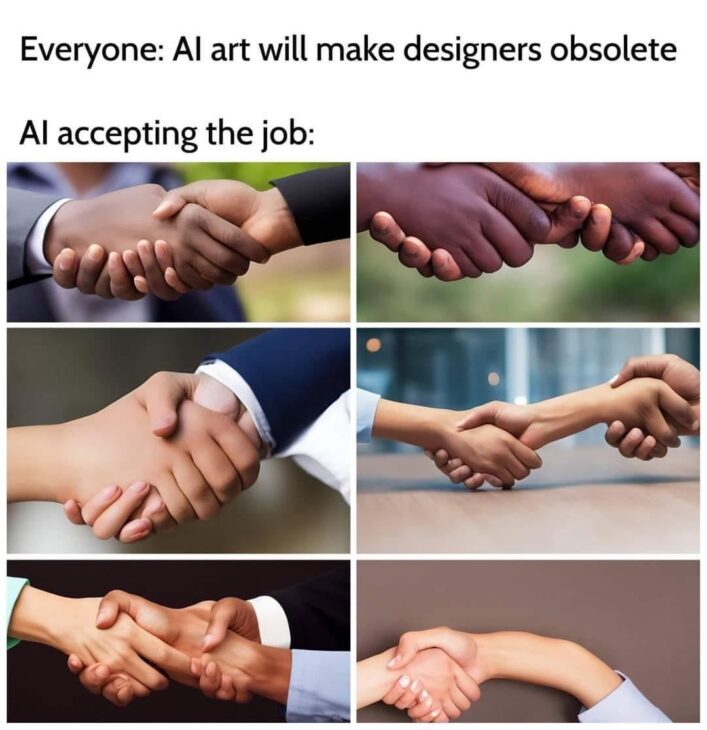
Have a play: Midjourney.ai | Lensa (app) | ChatGPT | Jasper

